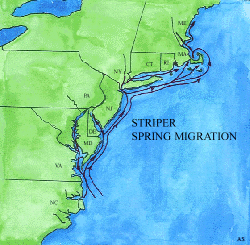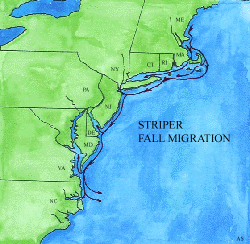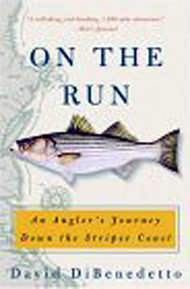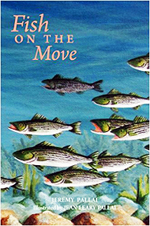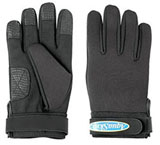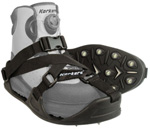
Finding Striped Bass
To fish for striped bass you first have to find them. This involves understanding the striped bass migration, and where the stripers go during the seasons of the year. You also have to understand the types of water they prefer, and how the winds and tides affect their feeding habits.
This section has 5 subsections. Don't miss anything, visit them all using the links below!
- The migration - this page
- Turbulent waters
- Winds
- Tides
- Look for the Birds
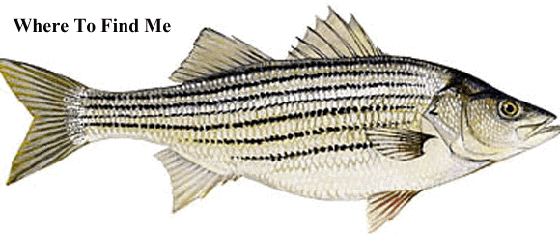
The Striped Bass Migration
Striped bass have a preferred temperature range of from 55° F to 68° F.
To stay within this temperature range, most striped bass migrate.
The migration has two parts, a spring migration, and a fall migration. It is during these migrations that the best striper fishing of the year occurs.
The Spring Migration
The spring striper migration begins from their wintering quarters in the deeper waters off of the Virginia and North Carolina coasts. In the spring as the water warms the stripers head north. Along the way they take detours to spawn in the bays and rivers along the coast. Significant spawning places include the Chesapeake Bay, the Delaware River, and the Hudson River.
After spawning they migrate further north seeking cooler water. They end up throughout New England waters, and even further north.
The Fall Migration
Link to larger:
Fall migration map
In the fall, as the water cools, the stripers head south again. This often coincides with various baitfish, including peanut bunker and silversides, coming out of the bays and into the ocean. The stripers, anxious to fatten up for the winter ahead are hungry, and when they meet up with the emerging bait pods, blitzes can occur all along the coast. Look for the birds. The fall migration extends into December along the New Jersey coast and even into January down around Virginia.
Most of the migrating stripers end up back down in the deeper waters off of the VA and NC coasts, where they spend the winter.
Locals and Holdovers
For their first few years stripers stay around the local rivers, bays and estuaries where they were born. They begin feeding in the spring when the water temperatures get above 45 degrees F. They can be caught during the day in the early spring as they seek the warmer waters in the shallows. As the spring progresses and the water warms, they will move out and hang around the ocean beaches. During the summer they seek deeper cooler water. If you are brave enough you might find some success fishing from the ends of jettys at night. In some areas schoolie stripers can be caught off the sod banks at night. In the fall when the water cools and baitfish move out into the ocean, the local striped bass will be there chasing them.
Variations
The stripers key on water temperatures. These water temperatures don't always occur on the same dates every year. Storms, and especially the remnants of hurricanes, can alter migration routes and timing.
During the fall migration, the stripers' desire for food over powers their waryiness of light and they will come in close to the beach looking for baitfish, even during daylight hours. Then they are within range of surf fishermen. However often the stripers stay more than a hundred yards off the beach and out of the casting range of frustrated surf fishermen, but within easy access of happy boat fishermen.
Some years many of the migrating stripers stay out in deeper water beyound the EEZ 3 mile limit. Then fishermen cannot fish for them, as it is illegal to fish for striped bass in the EEZ.
Follow this link to find out about the: EEZ
Following the Migration
In his book " On The Run", David DiBenedetto relates his experience where he took a couple of months off from work, and fished the striped bass fall migration from Maine to North Carolina. Along the way he caught lots of stripers and met many interesting characters.
You can follow the striped bass migration by monitoring fishing reports all along the striper coast. To see a page of links to these fishing reports follow this Link: Fishing Reports
